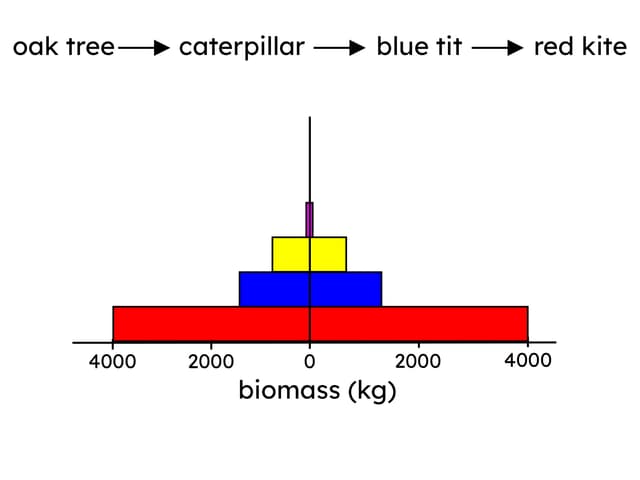Starter quiz
 Look at the food web diagram below. Which of the organisms is a herbivore?
Look at the food web diagram below. Which of the organisms is a herbivore?- pufferfish
- triggerfish
- tiger shark
- mantaray
- tang fish ✓
-
 Look at the food web diagram below. Which of the organisms is a carnivore?
Look at the food web diagram below. Which of the organisms is a carnivore?- seaweed
- tang fish
- clam
- tuna ✓
- zooplankton
-
 Look at the food web diagram below. Which of the organisms is an omnivore?
Look at the food web diagram below. Which of the organisms is an omnivore?- phytoplankton
- tang fish
- mantaray
- triggerfish ✓
- tiger shark
-
- Producers make their food from which two of the following?
- soil
- chemicals in their surroundings ✓
- light ✓
- consuming other organisms
-
 Look at the food chain diagram and match the organism to the correct description.
Look at the food chain diagram and match the organism to the correct description.- algae⇔producer ✓
- shrimp⇔primary consumer ✓
- cod⇔secondary consumer ✓
- seal⇔tertiary consumer ✓
- polar bear⇔apex predator ✓
 Look at the pyramid of numbers diagram. How many producers are there in the population?
Look at the pyramid of numbers diagram. How many producers are there in the population?- 7000
- 14 000 ✓
- 8000
- 3000
- less than 1000
-
Exit quiz
- What is meant by the term 'trophic level' when we talk about food chain diagrams?
- how many organisms are in the food chain
- the position an organism has within the food chain diagram ✓
- how much food the organisms eat
-
- The dry mass of organisms at each trophic level is called ...
- 'biomass' ✓
- Pyramids of numbers are not as good as pyramids of biomass because...
- pyramids of numbers do not take the size of organisms into account. ✓
- it is not easy to count the number of organisms in a population.
- the number of organisms in each part of the food chain are always changing.
-
 The following diagram is a pyramid of biomass. The population of which organism has the largest biomass?
The following diagram is a pyramid of biomass. The population of which organism has the largest biomass?- organism A ✓
- organism B
- organism C
- organism D
-
 Look at the food chain diagram and its pyramid of biomass. Put the organisms in the order of biomass (largest first).
Look at the food chain diagram and its pyramid of biomass. Put the organisms in the order of biomass (largest first).- 1⇔Oak tree
- 2⇔Caterpillar
- 3⇔Blue tit
- 4⇔Red kite
 What is the biomass of the oak tree in this pyramid of biomass?
What is the biomass of the oak tree in this pyramid of biomass?- 8000 g
- 8000 kg ✓
- 4000 kg
- 4000 g
- 2000 kg
-
Worksheet
Loading worksheet ...
Presentation
Loading presentation ...
Video
Lesson Details
Key learning points
- Food chains show feeding relationships between organisms and how food moves from one organism to another in a habitat.
- Biomass is the mass of living material in one or more organisms, and may be estimated.
- Pyramids of biomass show the biomass of organisms at each stage in a food chain.
- Pyramids of biomass use scaled bars to represent the total mass of organisms within a habitat.
- Pyramids of biomass have the producer at the bottom.
Common misconception
A common misconception is that the biomass increases as you move to the next trophic level, presumably because pupils incorrectly assume that biomass refers to individuals rather than populations.
The lesson gets pupils to estimate the biomass of populations at each trophic level to demonstrate that biomass decreases at each trophic level.
Keywords
Biomass - Biomass is the mass of living material in one or more organisms.
Pyramid of biomass - A pyramid of biomass is a diagram which shows the biological mass (biomass) of organisms at each trophic level in a food chain diagram.
Pyramid of numbers - A pyramid of numbers is a diagram which shows the total number of organisms at each trophic level in a food chain diagram.
+